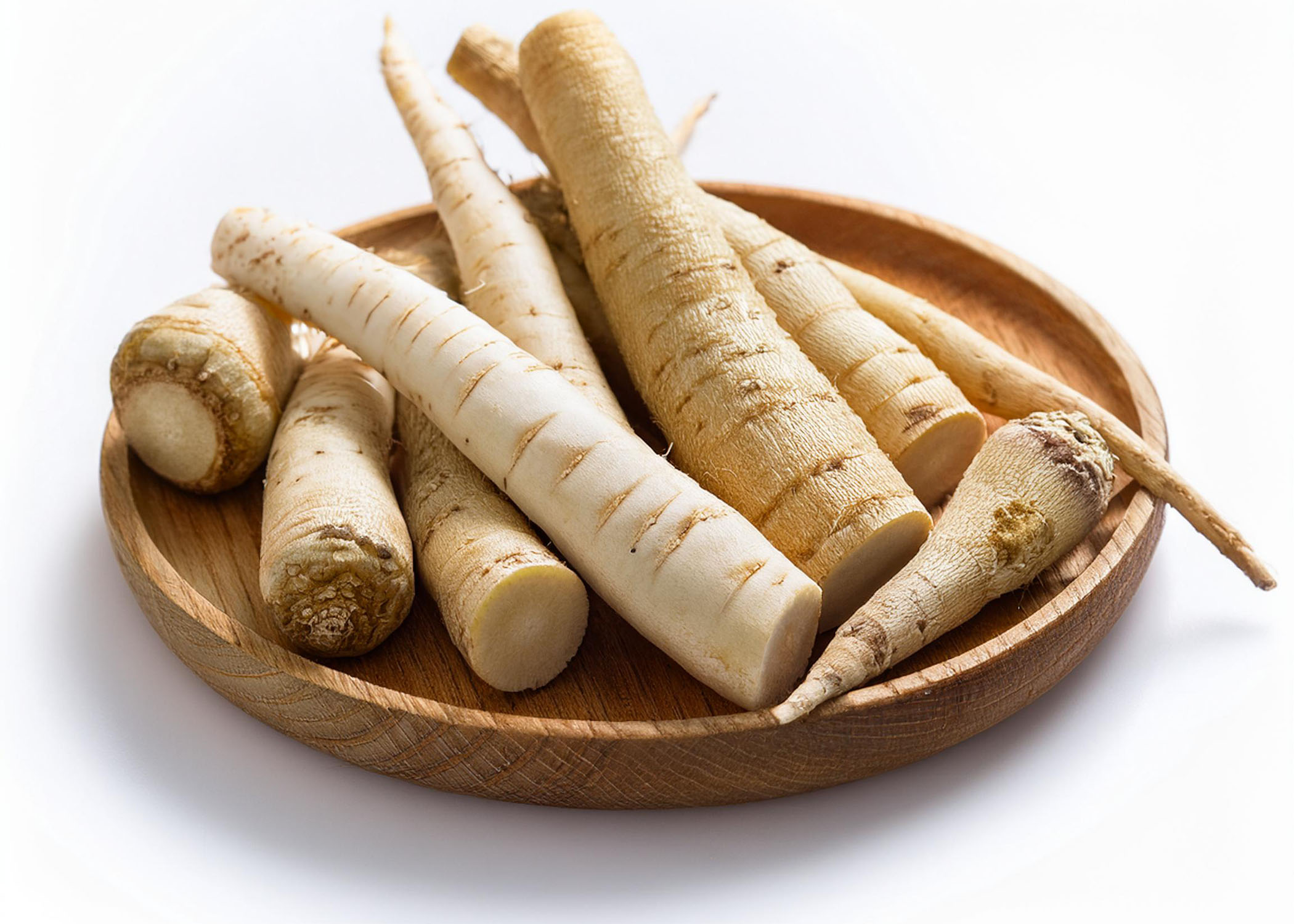Botanical Name: Armoracia rusticana
Horseradish is a pungent and powerful root vegetable, known for its sharp, spicy flavor and distinctive aroma. Native to Eastern Europe, horseradish has been cultivated for over 3,000 years and is prized for both its culinary and medicinal uses. The plant belongs to the Brassicaceae family, which also includes mustard, wasabi, and cabbage. While the leaves of the plant are edible, the root is the most commonly used part, offering a strong, biting flavor when freshly grated or processed.
The characteristic heat of horseradish comes from a compound called sinigrin, a glucosinolate found in the plant. When the root is cut, grated, or crushed, enzymes break down the sinigrin into allyl isothiocyanate, a volatile compound that gives horseradish its fiery taste and pungent aroma. Unlike chili peppers, the heat of horseradish affects the sinuses and nose more than the tongue, often causing a burning sensation that quickly dissipates. Interestingly, once horseradish is exposed to air, its heat diminishes over time, which is why it is often mixed with vinegar to stabilize the flavor in commercial preparations.
Horseradish is widely used as a condiment, especially in Central and Eastern European cuisines. It is typically served with roast meats, particularly beef and pork, as its sharp, peppery bite cuts through the richness of the meat. In the United States, horseradish sauce is a classic accompaniment to prime rib, while in the UK, it is traditionally served with roast beef. Horseradish is also a key ingredient in the beloved American cocktail sauce, paired with shrimp or other seafood, and it is frequently used to add a kick to Bloody Mary cocktails.
In Central Europe, horseradish is often grated fresh and served with cured meats, sausages, and smoked fish. In Jewish cuisine, horseradish is a traditional element of the Passover Seder plate, where it represents the “bitter herbs” (maror) and is eaten to symbolize the hardships endured by the Israelites in Egypt.

